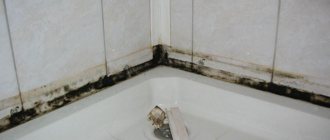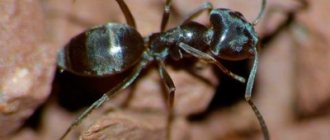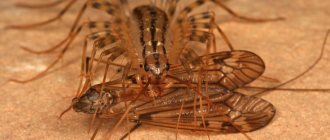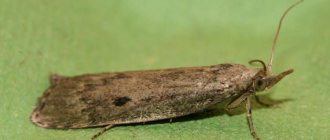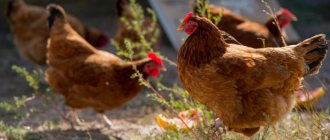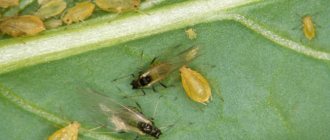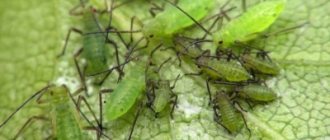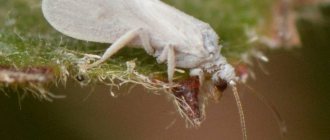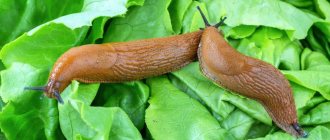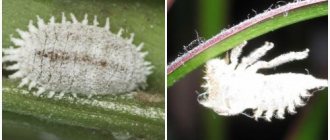It takes a lot of effort to harvest a bountiful raspberry harvest. In addition to thinning and fertilizing plants, it is necessary to combat various pests and diseases. One of the dangerous enemies of culture is the gall midge. Small winged insects lay eggs under the raspberry bark, and their larvae feed on the sap and tissues of the plant. Pests quickly spread through the bushes, so it is important not to miss the first signs of damage.
What is a gall midge?
The gall midge is an unremarkable small insect. Outwardly it resembles a mosquito with a body length from 2 to 5 mm. The insect has a small head, long antennae and black legs, and a brown back. A thin body covered with small hairs and transparent wings make the pest almost invisible. Therefore, gardeners notice the presence of insects on raspberry bushes based on traces of vital activity.
There are about 6,000 different species of gall midges in nature. Raspberries are affected by 2 of them: stem and shoot. They are identical in appearance and the degree of damage caused to the plant.
How to detect on raspberries?
A characteristic sign of raspberry infestation by this pest is growths on the branches that look like swellings:
- The shoot gall midge forms ring-shaped growths. The inner layer of the raspberry stem turns into dust, and cracks form on the bark. Traces of the presence of shoot gall midges can be found in the lower part of the branches, closer to the root.
- Stem gall midge attacks exclusively young shoots. The swellings look like lateral growths, similar to bumps. Their color is brown, the surface is rough.
Important! There may be one or more swellings on the shoot or stem.
What do growths and thickenings on the trunk indicate?
Growths and swellings on the shoots indicate that the female gall midge laid eggs with small legless larvae in cracks in the bark. The pests feed on raspberry juice and the gall gradually grows.
One growth can contain up to 10-11 larvae. They actively suck out the sap of the plant and weaken it. The size of one gall reaches 30 mm. Gradually, the larvae emerge from the growth and pupate in the soil, next to the roots. In the spring, adults emerge from the cocoons and the cycle repeats.
Symptoms
Infection can occur during the vegetative and reproductive stages.
The injury is usually most severe on the outfield.
Gall midges inject specific compounds into the plant that cause the cells to multiply, changing the normal growth habit. In other words, the insect encourages the plant to produce gall as a result of its feeding.
Damage includes interrupted flowering and blackened young stems or tips of young shoots, as well as distorted leaf development.
Symptoms of gall midge damage include:
- gall midges form a silvery-white hollow tube 1 cm wide and 10-30 cm long;
- the affected shoot prevents leaf growth;
- the leaf is deformed, withered and curled.
Curled leaves may also be associated with a symptom caused by thrips. To confirm the cause of the problem, check for insects. In particular, elongated tubular eggs and caterpillar-like larvae feed inside the developing buds.
Damage to gall midges
The pest larvae eat away the shoot tissue from the inside, depriving the plant of its vitality. Branches break even from a slight blow of wind. This means that a bush that survives until winter will not tolerate frost and will die by spring.
Attention! The shoot gall midge causes particular harm to raspberries. The larvae of which, after overwintering in the soil, spread over vast areas and destroy plants.
The tissues of the shoots damaged by the larvae are an open place for the penetration of fungal spores. Raspberries are affected by:
- anthracnose;
- gray rot;
- didimella;
- rust.
Causes of raspberry infection
Not a single raspberry plant is immune from gall midge infection, but most often the insect appears under the following conditions:
- Dense bushes. The pest feels most comfortable in the thickets. The lack of air movement and light in the foliage attracts mosquitoes, and they quietly lay eggs.
- Excess nitrogen in the soil. On overfed raspberry shoots, the bark cracks, and insects lay eggs en masse in these holes.
- High humidity. This factor is also attractive to insects.
Attention! One of the main factors in infecting a raspberry tree with a dangerous pest is planting new plants with galls on the shoots. Therefore, it is necessary to carefully study the purchased seedlings.
Prevention
Any measures to combat raspberry gall midge will not be effective without prevention. To prevent the appearance of mosquitoes overwintering in the soil in the spring, deep digging of the soil is recommended. Peat mulching is used as a measure to delay the flight of insects. A layer of at least 15 cm is poured onto the ground. An important factor is the thinning of the shoots.
If the shoots are severely damaged by pests, it is worth cutting them off completely. Next year new growth will appear, which must be looked after taking into account past mistakes. Carry out insecticidal treatment in a timely manner. To repel raspberry mosquitoes, experienced gardeners advise planting onions and garlic near the shoots. Pests do not like the smell of these vegetables. Dill and parsley will also help drive them away.
How to fight without using chemicals?
The first emergence of gall midges occurs at the earliest possible time, when buds begin to form and bloom on raspberries. The insect goes through 3 stages of development.
Therefore, the fight against it must be waged in all directions at once:
- Repels mosquitoes to prevent egg laying.
- Inspect the bushes and remove shoots with signs of developing growths. If there are few gall midge clutches, the shoots are cut out and burned. For large areas of infection, the method of opening the galls helps. An incision is made on the growths and the larvae are cleaned out. Then the wound is covered with garden pitch, clay or oil paint.
Folk remedies help protect raspberry bushes from insects:
- Dandelion infusion. 1.5 kg of leaves are poured into a bucket of warm water and left for 2 hours. The solution is sprayed generously on the bushes before bud break, then repeated after a week.
- Decoction of onion peels. 1.5 kg of raw materials are poured with 10 liters of boiling water, covered and left for 3 days. Before use, dilute 0.5 liters of infusion with a liter of water. The bushes are sprayed 3 times with an interval of 5 days.
- Infusion of onion pulp. For 10 liters of water take 1 kg of chopped onion. Add 50 g of laundry soap shavings so that the solution sticks better to the branches. Spraying begins with bud break, and then every 10 days until fruit formation begins.
- Mustard powder. The bushes are dusted with it after preliminary wetting the leaves. The soil is spilled with a solution consisting of 10 liters of water and 200 g of mustard.
- Infusion of tansy, wormwood. 350 g of chopped dry grass is poured into 1 liter of water. Then the resulting solution is heated for 15 minutes in a water bath. The broth is infused for 12 hours. Then increase the volume to 10 liters and treat the plants 2 times with an interval of 10 days.
Advice! Spraying with folk remedies is best done in the evening, in dry weather. If it rains after treatment, the procedure is repeated.
Control with pesticides
Chemicals to combat gall midges are used before flowering begins. Otherwise, harmful substances accumulate in plant tissues and subsequently move into the berries.
According to gardeners, the following insecticides are most effective:
- Arrivo is a contact-intestinal poison with a wide spectrum of action. Plants are sprayed with a solution of 15 ml per 10 liters of water.
- Spark – destroys adult insects and larvae. Dissolve 1 tablet of the drug in 1 liter of hot (40 degrees) water, then increase the volume to 8 liters.
- Calypso is a fast-acting drug that paralyzes the pest’s nervous system. 1 ml of poison is dissolved in 5 liters of water. Treat the plant 2 times with an interval of two weeks.
- Confidor is a systemic drug that penetrates plant tissue and lasts for at least 21 days. Spray with a solution of 1 ml per 10 liters of water.
- Karate - the result of treatment with this drug is visible after 30 minutes. 1 ampoule of the product is dissolved in 1 liter of water.
Carefully! When working with chemicals, it is necessary to protect your skin and eyes. While processing bushes, you should not drink, eat or smoke.
Preventive measures
It is easier to prevent a pest infestation than to get rid of it later. To do this, you should adhere to the following recommendations:
- Selection of healthy planting material. Seedlings with signs of gall are discarded and burned.
- Compliance with plant watering standards.
- Shallow autumn digging of the soil around the bush to destroy pest pupae.
- Planting plants with a pungent odor that repels insects near the raspberry tree: lavender, onions, garlic, dill, parsley. However, this method works in conjunction with other measures.
- Timely thinning pruning of bushes to prevent thickening.
- Mulching the soil with pine sawdust or pine needles.
- Trimming lower stems. Removing shoots in this part of the bush does not reduce the raspberry harvest, since fruit buds do not form there. This technique reduces the possibility of gall midges laying eggs.
Important! There are raspberry varieties that are immune to gall midge infection: Credo, Phenomenon, Vera. Planting a remontant variety, the shoots of which are completely pruned in the fall, also serves as a kind of protection against the pest.
Comprehensive measures for the prevention and destruction of the pest will help protect the raspberry tree and preserve the harvest. Compliance with the rules of caring for raspberries is one of the main conditions for the fight against the dangerous insect gall midge.
5/5 — (1 vote)
Stem cancer
This bacterial disease affects not only shoots but all parts of the plant. Small swellings form along or around the stem, which merge with each other over time. At first they are soft and white, then harden, turn brown and collapse. The buds increase in size and die.
Bacteria enter raspberries through mechanical damage. Infection occurs through planting material, and bacteria are also carried by wind and drops of moisture.
The pathogen overwinters in the affected parts of plants.
